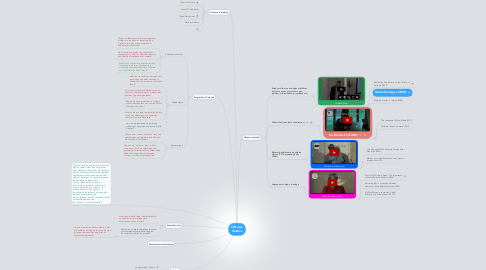
1. Potencial crítico
1.1. How can work with large cultural data help us question our stereotypes and assumptions about cultures?
1.2. How do we cultivate critical lens to parse out recovered digital histories against the material matrix of the present?
1.2.1. How to best democratize computer vision and machine learning so they can be used by researchers and students without technical backgrounds?
2. Software contains models of involvement with processes rather than simply with static elements - think about groupware, or the way in which most previously discrete applications have become part of wider suites of processes, to say nothing about the inherently modular nature of Unix. What would it mean to incorporate an explicitly wider notion of such processes into software - to reinfuse the social, the dynamic, the networks, the political, communality (perhaps even rather, or as well as, privacy) - into the contained model of the individualised user that HCI has us marked down for?
3. Campos de interface
3.1. Social Computing
3.2. Cultural Analytics
3.3. Critical Code Studies
3.4. Digital Humanities
3.5. Platform Studies
3.6. STS
4. Ferramentas metodológicas
5. Perguntas de Pesquisa
5.1. Paradigmas teóricos
5.1.1. What new theoretical cultural concepts and models are required for studying global digital culture with its new megascale, speed, and connectivity?
5.1.2. Do we need to develop new theoretical concepts and models to deal with the scale and velocity of user-generated content?
5.1.3. What kind of critical and inventive thinking is required to develop the capacity for unleashing the unexpected upon software and the certainties which form it?
5.2. Metodologia
5.2.1. How can we combine computational techniques with older methods of humanities, social science and media theory?
5.2.2. How can we combine different levels of analysis: individual artifacts, medium-scale patterns, large-scale patterns?
5.2.3. How do we explore patterns in massive visual collections that may contain billions of images and video?
5.2.4. How do we use data to measure diversity, variability, differences, and temporal changes in cultural data sets?
5.2.5. How do we fashioning documentary methods to recognize and recover digital histories?
5.3. Epistemologia
5.3.1. What would "science of culture" that use computation and big data look like, and what will be its limitations?
5.3.2. How can we "observe" giant cultural universes of both user-generated and professional media content created today, without reducing them to averages, outliers, or pre-existing categories?
6. Periódicos
6.1. Computational Culture
6.2. E-Media studies
7. Gênese conceitual
7.1. Estudos culturais e ecologias midiáticas (software e seus processos sociais, políticos, comunidades, privacidade etc)
7.1.1. Matthew Fuller
7.1.1.1. Behind the Blip: Essays on the Culture of Software (2003)
7.1.1.2. Media Ecologies (2005)
7.1.1.3. Software Studies: a lexicon (2008)
7.2. Cultural Analytics (data visualization)
7.2.1. Lev Manovich (CUNY)
7.2.1.1. The Language of New Media (2001)
7.2.1.2. Software Takes Command (2013)
7.3. Materialidade forense de objetos digitais (DH X arqueologia das mídias)
7.3.1. Matthew Kirschenbaum
7.3.1.1. Virtuality and VRML: Software Studies After Manovich (2003)
7.3.1.2. Mechanisms: New Media and the Forensic Imagination (2012)
7.4. Linguagem, código e ideologia
7.4.1. Katherine Hayles (Duke)
7.4.1.1. Print Is Flat, Code Is Deep: The Importance of Media-Specific Analysis (2004)
7.4.1.2. Narrating Bits: Encounters between Humans and Intelligent Machines (2005)
7.4.1.3. My Mother was a computer: Digital Subjects and Literary Texts (2010)

